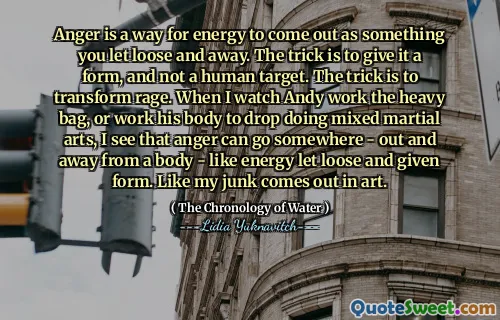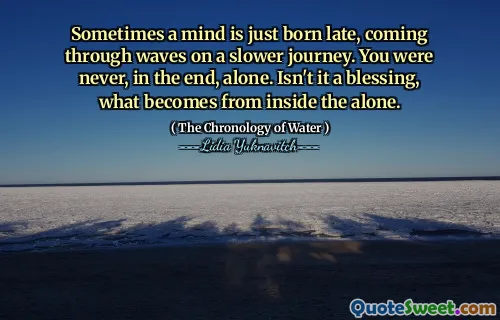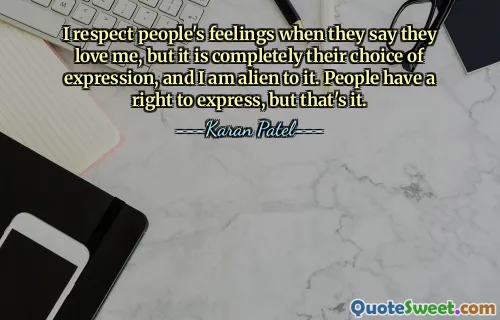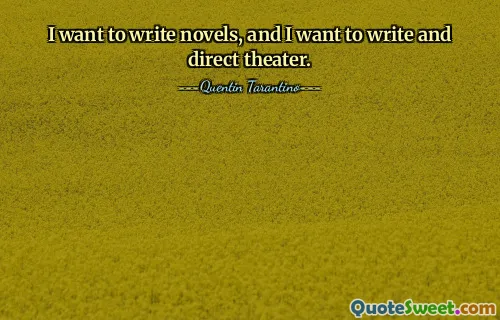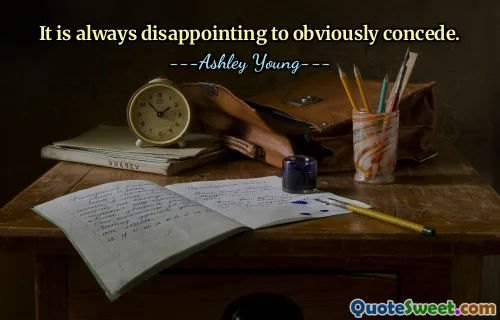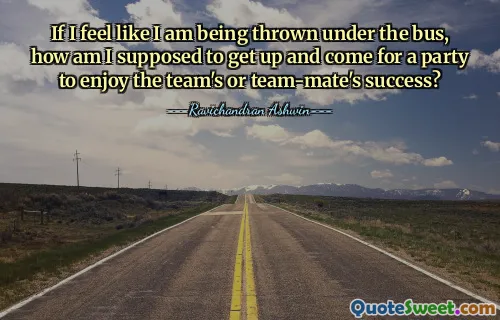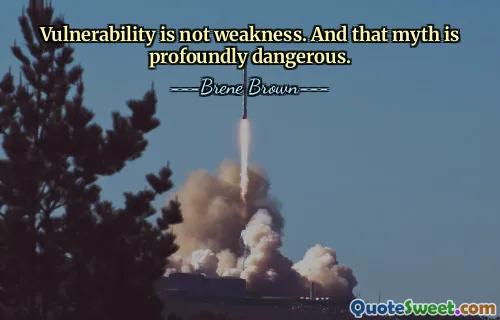
Anger is a way for energy to come out as something you let loose and away. The trick is to give it a form, and not a human target. The trick is to transform rage. When I watch Andy work the heavy bag, or work his body to drop doing mixed martial arts, I see that anger can go somewhere - out and away from a body - like energy let loose and given form. Like my junk comes out in art.
This quote eloquently captures the transformative power of channeling intense emotions, particularly anger, into constructive outlets rather than allowing them to cause harm or linger internally. The notion that anger is a form of energy that yearns to be released suggests that emotions themselves are not inherently destructive but require appropriate expression. The idea of 'giving it a form, and not a human target' is profoundly important, highlighting the ethical responsibility of redirecting potent feelings away from interpersonal violence or damage towards creative or physical expressions. The imagery of Andy practicing martial arts and hitting the heavy bag represents one such physical, tangible method for managing rage: it is a controlled release where the energy is purified and redirected. Similarly, the author references her own artistic practice, illustrating that each individual finds unique paths to channel and process their inner turmoil. This perspective is crucial in understanding emotional regulation—not as suppressing feelings, but transmuting them into something positive or productive. It offers a hopeful narrative for those grappling with rage or frustration, demonstrating how these feelings can become sources of strength, creativity, and healing rather than destructive forces. From a psychological standpoint, this aligns with therapeutic methods such as catharsis and expressive arts therapies. Overall, the passage emphasizes empathy, self-awareness, and the human capacity for transformation through intentional action.
